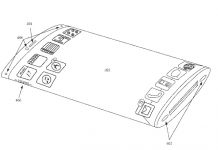 I just got around to doing a software update on my iPad. Among others it fetched a new update to the Reeder RSS reader, containing a remarkably useful feature that I am extremely glad to have. Although I mentioned the Reeder vs. MobileRSS controversy last week at the time the update actually came out, the nature of the update escaped my notice until now.
I just got around to doing a software update on my iPad. Among others it fetched a new update to the Reeder RSS reader, containing a remarkably useful feature that I am extremely glad to have. Although I mentioned the Reeder vs. MobileRSS controversy last week at the time the update actually came out, the nature of the update escaped my notice until now.
Reeder has added a Readability button to its user interface. When I encounter a RSS feed that does not provide the whole article (some feeds are especially obnoxious that way—most notably The Bookseller’s, which only provides the first seven words of the article), I just hit the button and it uses Arc90’s Readability to fetch and render it into an easily-readable text version within Reeder’s normal interface, indistinguishable from a full-feed RSS post. Which means I no longer have to bother visiting the site, waiting for it to render, and squinting at the page trying to read it. (Or just starring the article and going back to read it later on my computer.)
Of course, this doesn’t help with feeds such as Techmeme or Google News that contain links to other articles rather than the text of the articles themselves, but for reading feeds like The Bookseller or Ars Technica, I’ll take it gladly.
Of course, I doubt that Ars Technica is any more pleased with this innovation than it was with the similar Safari Reader (which also used Readability code). Ars’s Editor in Chief Ken Fisher was upset enough with the Safari Reader function only giving ad impressions from one page, but Reeder users now don’t have to see any ad impressions at all from the site. (Also, full text RSS feeds of Ars Technica are only available to those who pay money to subscribe—which Reeder now essentially bypasses.)
This actually seems to be the opposite of what social reading app Flipboard has done with a recent update of its own: whereas you used to have to click a button to launch a browser and read the full text of a scooped article on the web, now you actually see the top of the actual webpage in the lower portion of the iPad screen and can just pull it up to start reading. With the Reeder update, you never have to see the webpage at all.
Given the controversy that surrounded Flipboard’s permissionless scooping when it first came out (though there ended up being few actual publisher complaints), and the the similar controversy involving Pulse’s incorporation of a publicly-available New York Times RSS feed, I’m a little surprised Reeder hasn’t come in for complaints from sites that use abbreviated feeds to try to entice people into visiting their sites and displaying their ads. If it did that to web cartoons instead of textual articles, the webcomics community would have been all over it.






























